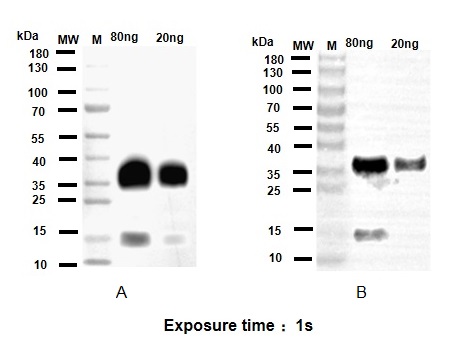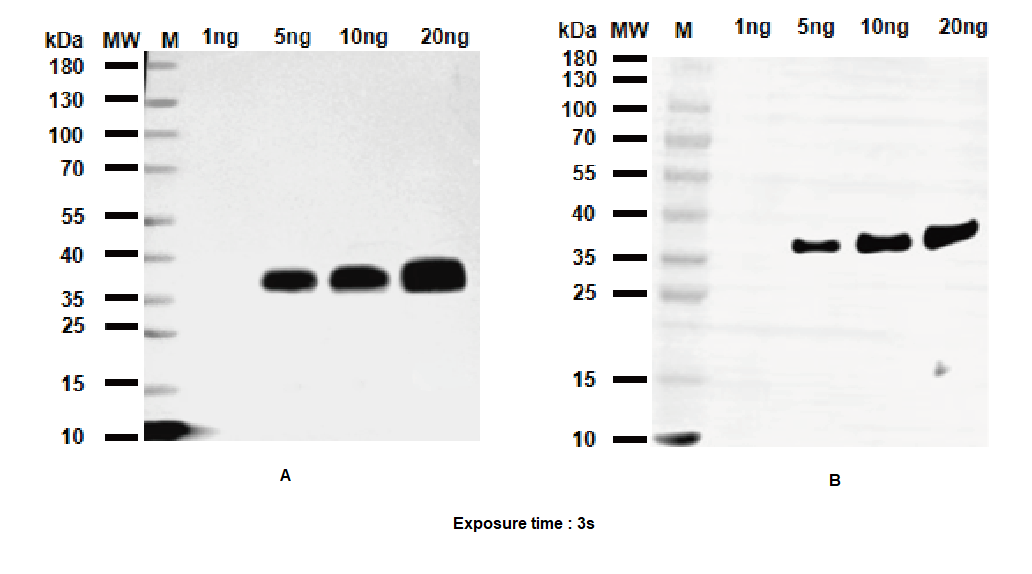

Size:2T Price:$120
Core Product Advantages
Extreme Efficiency
Reduces experimental time from 1-2 days to just 3.6 hours, improving efficiency by 300% and saving researchers valuable time
Ready-to-Use Design
Includes most reagents and consumables for complete workflow - only requires water, ethanol/methanol, and antibodies, reducing prep time by 80%
Superior Performance
Optimized formulations ensure high sensitivity (fg level) and low background, producing sharp bands and reliable results
Result Consistency
Optimized reagents and standardized protocols ensure high batch-to-batch consistency, reducing repeat experiments and improving data reliability
Experimental Safety
Ready-to-use pre-cast gels, odorless buffers, avoiding exposure to toxic reagents like acrylamide
Experimental Step Time Comparison
Compared with traditional Western Blot experiments, each step saves significant time
Sample Prep & Electrophoresis
Transfer & Blocking
Antibody Incubation & Detection
* Pre-cast gels eliminate gel preparation time, allowing immediate experiment start
Total time: Traditional WB ~24-48 hours → EnkiLife Rapid WB only 3.6-4 hours
Overall Performance Comparison
Comprehensive comparison: EnkiLife 4-Hour Rapid WB Kit vs Traditional WB
| Comparison Item | Traditional WB | EnkiLife 4-Hour Rapid WB Kit |
|---|---|---|
| Total Experiment Time | 24-48 hours | 3.6-4 hours 85% Saved |
| Procedure Complexity | High (requires multiple solution preparations) | Low (ready-to-use reagents, simplified workflow) |
| Required Self-Prep Reagents | 15+ types | Only water, ethanol/methanol, and antibodies |
| Result Consistency | Medium (operator-dependent) | High (standardized protocols and reagents) |
| Background Interference | Medium-High | Very Low (optimized blocking and wash buffers) |
| Beginner-Friendly | Low (requires extensive experience) | High (detailed guidance, simplified operations) |
| Experimental Cost | Medium (high failure rate) | Optimized (reduces repeat experiments) |
Product Specifications & Components
Kit available in 30T size to meet various experimental needs
| Component | Storage Condition | Size 2T (For 30 Assays) |
|---|---|---|
| Protein Loading Buffer (5X) | -20℃ | 0.2ml |
| Pre-stained Marker (10-180kDa) | -20℃ | 20μl |
| Pre-cast Gel (Bis-Tris, 4-20%, 15 wells) | 4℃ | 2 units |
| Electrophoresis Buffer Granules | 4℃/RT | 2 packs (500ml/pack) |
| PVDF Membrane (0.45μm) | 4℃/RT | 2 sheets |
| Transfer Sponges (Filter-Free) | 4℃/RT | 4 pieces |
| Rapid Transfer Buffer Granules | 4℃/RT | 2 pack (1L/pack) |
| Protein-Free Rapid Blocking Buffer | 4℃ | 20ml |
| Antibody Diluent | 4℃ | 20ml |
| Wash Buffer (10X) | 4℃ | 14ml |
| ECL Substrate Solution A | 4℃ | 1.2ml |
| ECL Substrate Solution B | 4℃ | 1.2ml |
Shelf Life:
Protein loading buffer and pre-stained marker: -20°C; other reagents: 4°C. Shelf life: 1 year. Full kit at 4°C: minimum 3 months stability.
Pre-cast gels must be stored at 4ºC - do not freeze below 0ºC
Performance Comparison Data


Group A: EnkiLife Kit Results | Group B: Competitor Kit Results
Third-Party Test Results
To ensure impartiality, these experiments were conducted by an independent third party following respective kit protocols.
Test Conditions:
- Sample: Mammalian-expressed recombinant His-METRNL protein (30.7kDa)
- Loading amounts: 80ng, 20ng, 10ng, 5ng, 1ng
- Primary antibody dilution: 1:1000
- Secondary antibody dilution: 1:5000
- Same marker standard used
Conclusions:
- Group A has cleaner background than Group B
- Both groups detected clear bands and one non-specific band
- Group A sample bands are clearer and more intense
- Group A replicates show highly consistent band position/intensity
Important Precautions
- Store pre-cast gels at 4ºC - do not freeze below 0ºC
- Always change pipette tips when dispensing ECL Solutions A and B to prevent cross-contamination
- Prepare next-step reagents during waiting periods to save time
- ECL working solution has fg-level sensitivity - adjust exposure time as needed
- Ensure no bubbles between gel and membrane during transfer
- Adjust antibody incubation time based on signal intensity
- Optimal loading amounts vary by protein - conduct pilot experiments
- Use freshly prepared transfer and electrophoresis buffers for best results
